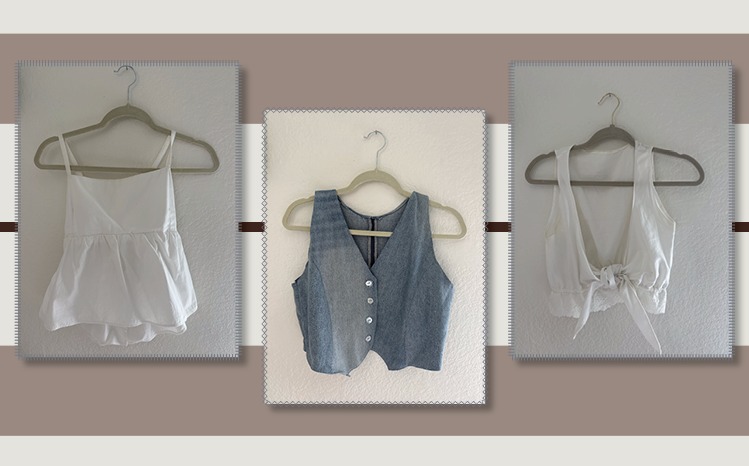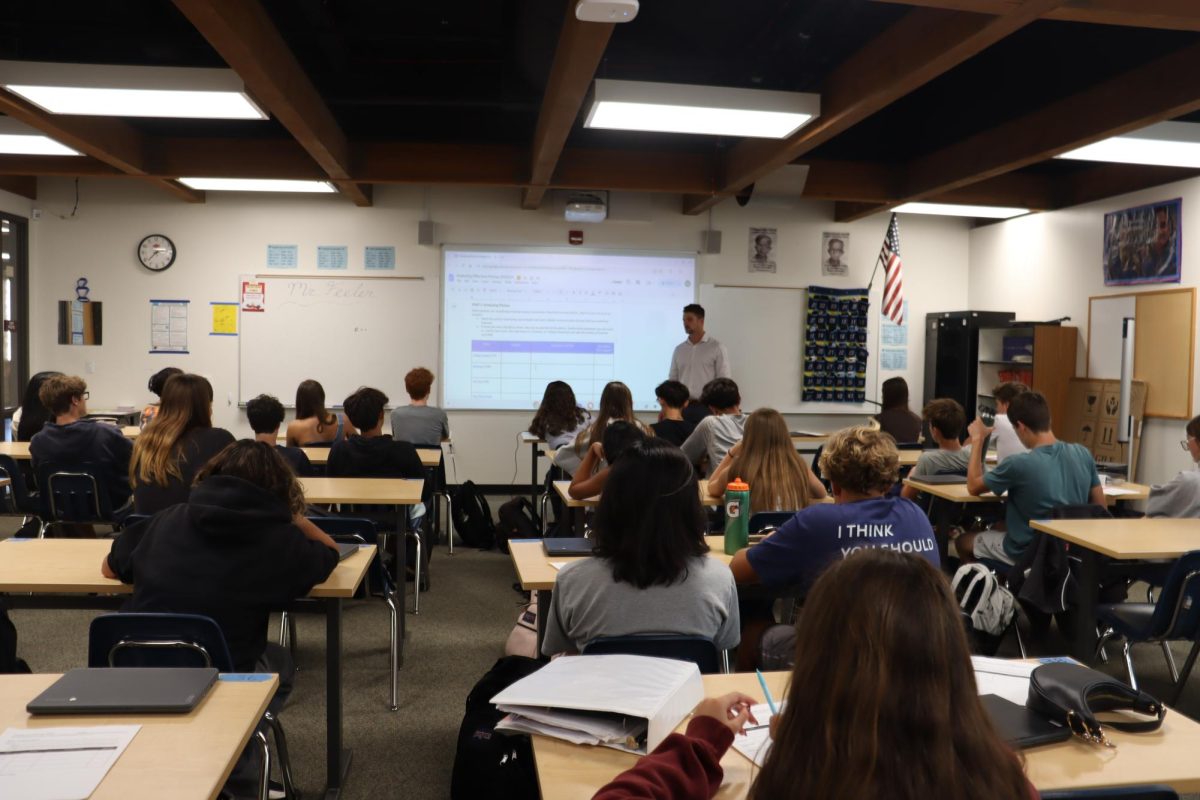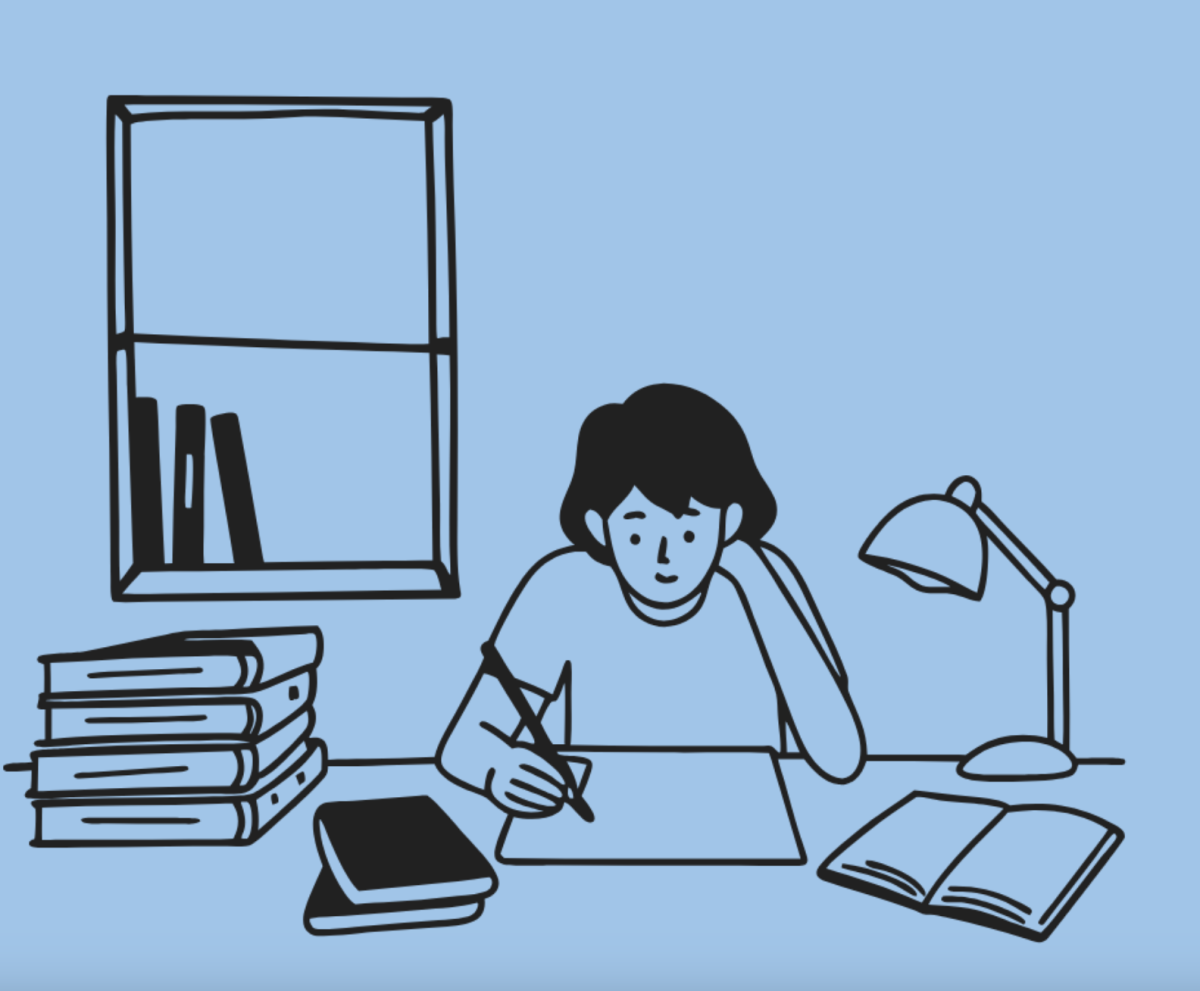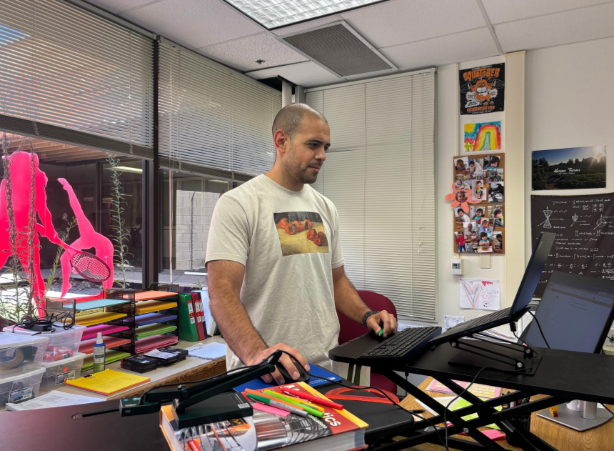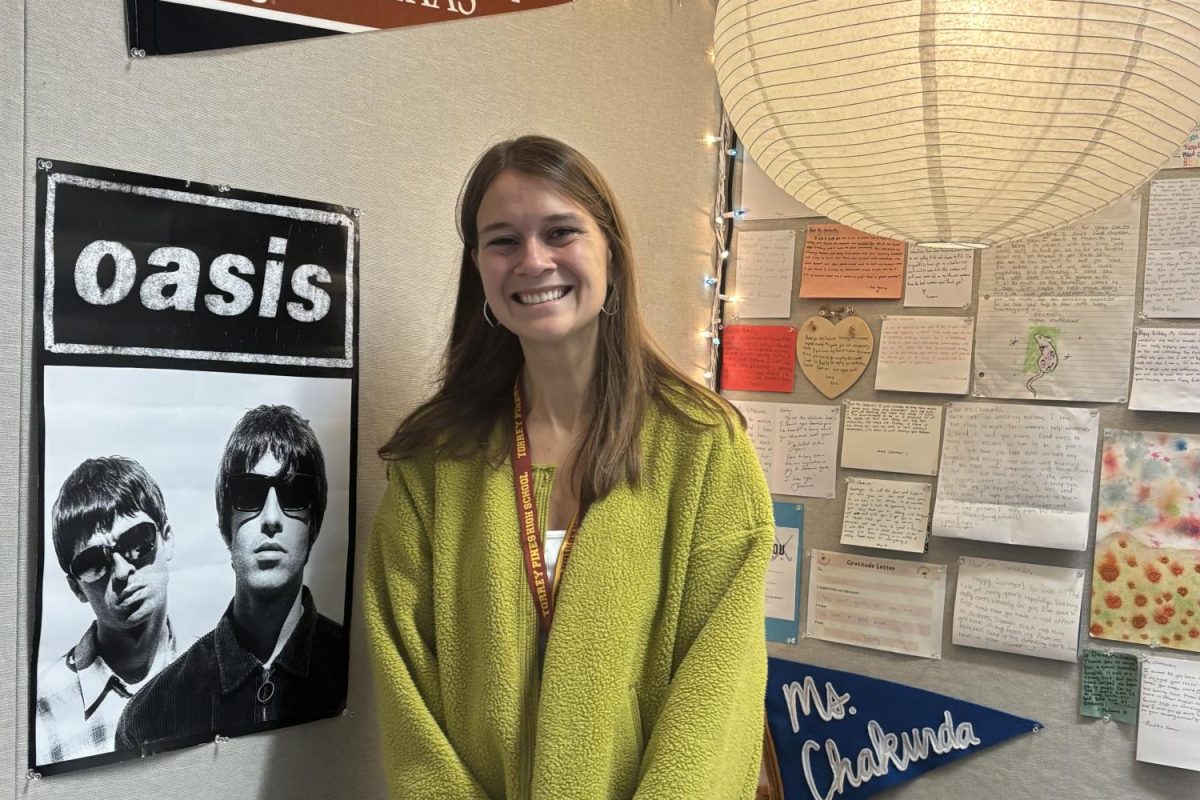Pencils scratch against paper, strong, confident lines carving out fashionable figures. Chalk rubs against fabric, dusty residue lingering on fingertips. Loud, satisfying snips pierce the air as sharpened scissors slice through layers of fabric. Pins pinch fingers as they weave along lines. Soon, the air is filled with the steady thumping of the sewing machine needle piercing through fabric, over and over again. Slowly, a piece of clothing is formed by deft hands.
In an post-industrial country filled with online shopping and fast fashion trends, few students take the time to slow down and create something for themselves.
Dean Smith (11) was first introduced to the world of fashion when he watched “Project Runway” with his mother in third grade. Drawn in by the competitive spirit, Smith began learning to sew and continues to nurture that passion.
“I like the creativity that [sewing] gives me,” Smith said. “It’s cool seeing my ideas come to life and being able to express myself with the things that I wear.”
This perspective is echoed by Emma Schreuder-Welte (12), who began taking sewing lessons at seven years-old in the hopes of becoming a fashion designer. While she no longer has the same career aspirations as her younger self, Schreuder-Welte still holds a love for the craft itself.
“It’s just another great, creative outlet,” Schreuder-Welte said. “There’s so many ways we can express ourselves, whether it’s music, art, or entertainment. Sewing is just another one of those things that can help you get out of your head and use your imagination a little bit. You can literally create whatever you want out of fabric.”
This ability to create is vital and often lost within the school system, according to Costume History and Design teacher Marinee Payne.
“Doing anything with your hands and taking what’s in your head and being able to put it together into something that you can tangibly hold and say ‘I did this’ is really, really important,” Payne said. “A lot of education is very analytical and not as creative, so many people are a little bit cautious about taking the ideas in their heads and putting them together for other people to see.”
Creating one’s own clothes can also be a step towards more conscientious fashion choices.
“I love that you can repurpose old stuff,” Lauren Suh (12) said. “I don’t buy fabric so I use old denim or whatever I have. I usually just draft my own patterns; you can take any design you want and make it a lot more affordable.”
Suh started sewing in 2020 during the COVID-19 lockdown. Gradually, her home-made scrunchies progressed into larger projects.
The practical implications of sewing extend beyond sustainability to functionality.
“It’s actually a functional life skill that not a lot of people have anymore,” Schreuder-Welte said. “I don’t have to take most things to the tailor anymore, I can just do it myself. I can hem my own pants, I can sew my own buttons, fix any holes and sew my own patches.”
While these students all share their love for creating fashion, Suh observed that not many others in her generation are interested in sewing.
This phenomenon is reflected at the school. According to Payne, who has run the school’s theater for decades, the number of students she has had who were passionate about sewing has diminished over the years. This year, she does not have any students passionate about sewing to help in the costume department.
Schreuder-Welte also noticed this downward trend.
“Fewer and fewer people know how to sew, and when people do know how to sew, it’s reduced to maybe fixing a hem or sewing a button,” Schreuder-Welte said. “Such a small percentage of the people today would be able to sew a dress or an actual project. Nowadays that everything is so industrialized and factory produced and we can get clothes for pretty cheap, people just don’t have the need anymore.”
While online shopping may be easier, it loses a lot of the value provided by sewing, according to Payne.
“I find that this whole idea of ‘personal labor’ … is lost because so many of us are in there for the instantaneous gratification,” Payne said. “Even if what you do doesn’t turn out as well as you’d hoped, learning from that is very, very important … in doing creative projects, you make mistakes and you get a real sense of empowerment from it.”
Each student gains these valuable lessons through their creative process.
“A lot of times I’ll restart things because they don’t fit,” Suh said. “It’s taught me to be more intricate with the process and to think it out before I sew and then have to seam rip everything.”
Smith learned a similar lesson in his experience.
“[Sewing] taught me persistence and to stick with something even if it’s hard work and even if it’s very tedious,” Smith said.
Schreuder-Welte learned to accept imperfections.
“Not everything turns out perfect,” Schreuder-Welte said. “I have a ton of awkward little sewing projects that did not quite fulfill the vision and I think that’s okay. It’s still an expression of you and it’s still such a fun process even if the final product isn’t what you intended it to be.”
Payne, Smith, Suh and Schreuder-Welte all recommended others take up sewing. In a world beginning to forget its value, it is never too late to learn something new and spread the love of creation.
“[Sewing is] a great way to express yourself, to use your hands, to use the creative side of your brain and just do something fun with your time,” Schreuder-Welte said.


